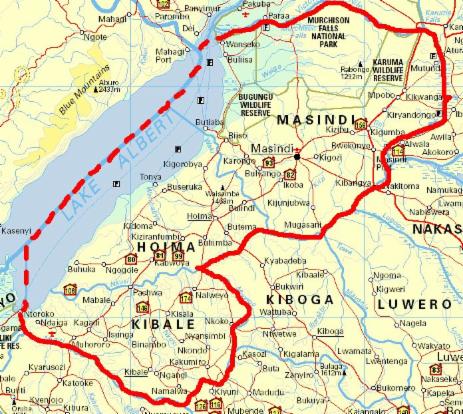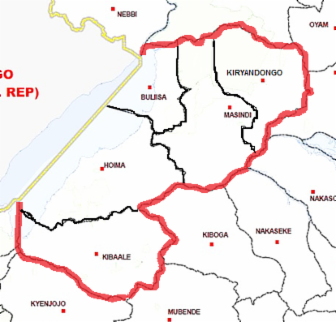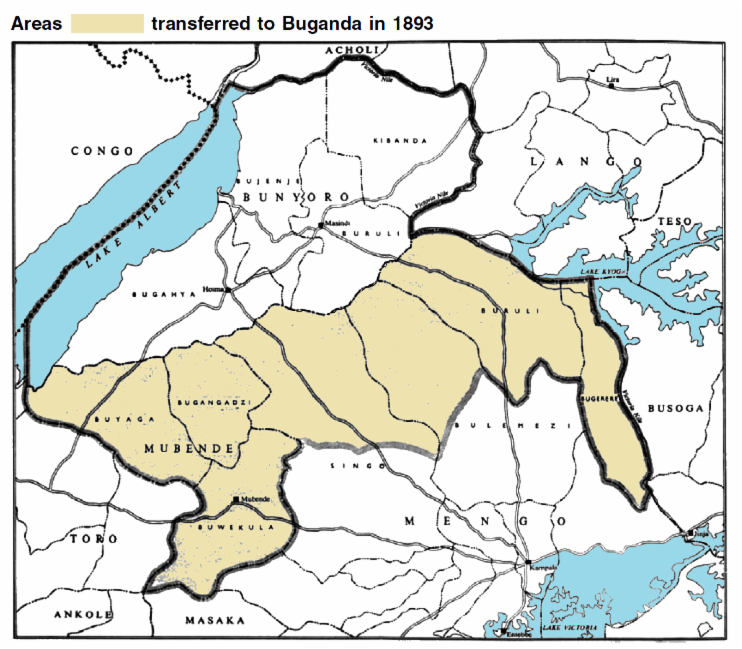BUNYORO - KITARA KINGDOM - Profile
Bunyoro Kitara Kingdom in mid-western Uganda lies 1°N to 2°N and 30°45' East to 32°25' East of the Equator. It enjoys a rich history spanning over 4000 years. Presently it is composed of three districts of Kibaale, Masindi, and Hoima. It covers a total area of 21,376 sq kms, one third of which is covered by water mass. It has the advantage of a central titularship of the King, His Majesty Rukirabasaija Agutamba Solomon Gafabusa Iguru I.
Bunyoro-Kitara Kingdom is a subnational monarchy (traditional)
HM The Omukama Rukirabasaija Agutamba Solomon Gafabusa Iguru I. is a reigning constituent monarch, traditional ruler. He reigns over a legally recognised dominion, but with no sovereign governing / political power. His titles, however, are recognised by the Republic of Uganda.
In Uganda, the ancient kingdoms and chiefdoms that were met by the colonialists when they first arrived on the continent are now constitutionally protected as regional entities.
HM The Omukama (King) of Bunyoro-Kitara Kingdom and the Bunyoro-Kitara Kingdom were restored by the Amendment [No. 8] Act - Statute No. 8, Article 118 (1)- of 1993 enacted by the Parliament of Uganda and officially recognized and protected by the Constitution of the Republic of Uganda by Chapter IV. –Article 37.-, Chapter XVI. -Article 246. (1) – (6)- of 1995 and by the Amendment [No. 2] Act -schedule V. -Article 178.8- of 2005 and by the Acts Supplement [No. 4] -Act 6. of 2011

The total population of the Kingdom is about 1.4 million people comprising 49% males and 51% females. It has got a growth rate of 6.1%. The Kingdom has got 256,458 households of which over 96% are rural. It has a total fertility rate of 7 and life expectancy of 46.4 years. The infant mortality rate is 102/1,000 while the maternal mortality rate is 525/100,000 live birth. Teenage pregnancy is 16% adolescent deliveries 29% and high risk at birth is 29.8%. Nurse/Midwife mother ratio is 1:4518.
The population is heterogeneous in nature having about 56 ethnic groups and 52 clans. Only 1.12% of the total population use Electricity for lighting and most of these are in urban centres. The biggest proportion of the population (99.42%) uses wood fuel for lighting and cooking.

The Bunyoro-Kitara Kingdom consists of five districts:
- Buliisa District
- Hoima District
- Kibaale District
- Kiryandongo District (Kiryandongo District was established on 01 July 2010. Prior to that, it was part of Masindi District. The district is part of Bunyoro sub-region, which is coterminous with Bunyoro Kingdom.)
- Masindi District
The Kingdom's inhabitants belong to three main religions, namely Protestants, Catholics and Muslims. About 3% of the population live in urban centers. 77% of the people live on subsistence agriculture with an income per capita of 143,000 per annum, however 60% of our land is still virgin land.
As a cultural head, the King is assisted by his Principal Private Secretary, a Cabinet of 21 Ministers and Orukurato (Parliament), however the Kingdom, as an institution since restitution by the: Restitution of Traditional Rulers Statute of 1993 (and later confirmed by the 1995 Constitution), is restricted to cultural and development advocacy matters. However, through non-profit Kingdom institutional organs, such as Bunyoro Kitara Kingdom Youth Foundation, it is mandated to enter into partnerships with local, national and international organizations and individuals with demonstrable interest in fostering development in the Kingdom.
Among our major objectives is to provide and promote sustainable socio-economic emancipation, a strong cultural heritage of our people in Bunyoro-Kitara Kingdom.
- Promote electronic information technology application and utilization through the establishment of a multipurpose community telecentre.
- Promote sustainable development by education and human resource development in all sectors, through training.
Cultural sites and tourist attractions: The Kingdom has a variety of attractions which include: the royal tombs at Mparo, Katasiha Fort, Karuziika Palace, hot springs at Kibiro, African Village, Murchison Falls National Park, rare species of butterflies, apes and medicinal tree species, etc. Please visit our Virtual Museum.
Bunyoro Kingdom is also blessed with mineral wealth, including oil at the Lake Albert rift valley, gem stones: tourmaline, ruby, red and green garnet, etc, and other minerals, titanium, tin and gold, as well as iron. His Majesty has done some gold prospecting. Random pit sampling yielded a minimum of 3 grams to 19 grams of alluvial gold per one cubic meter. This is also contained in the geological report of 1995.

